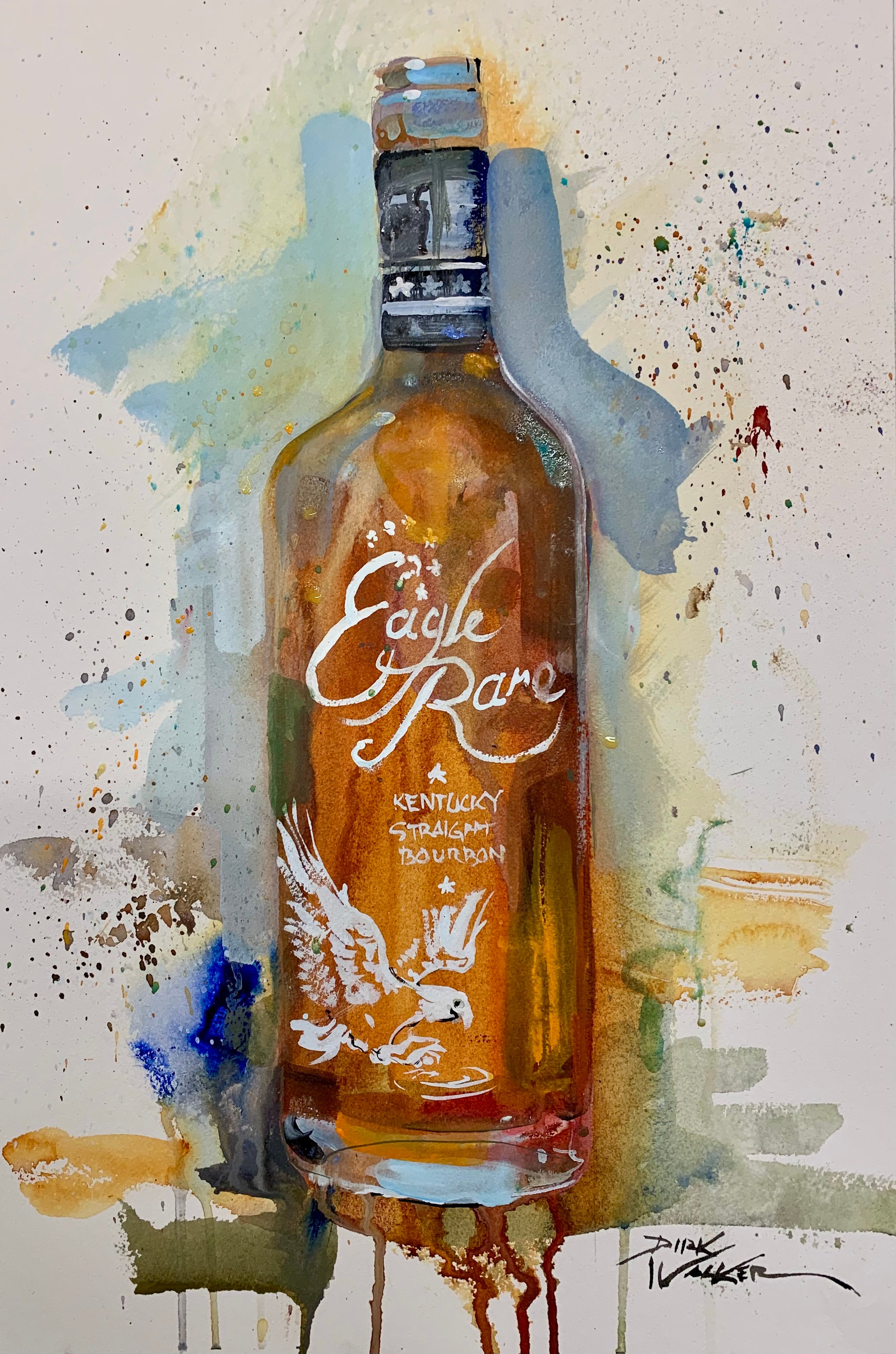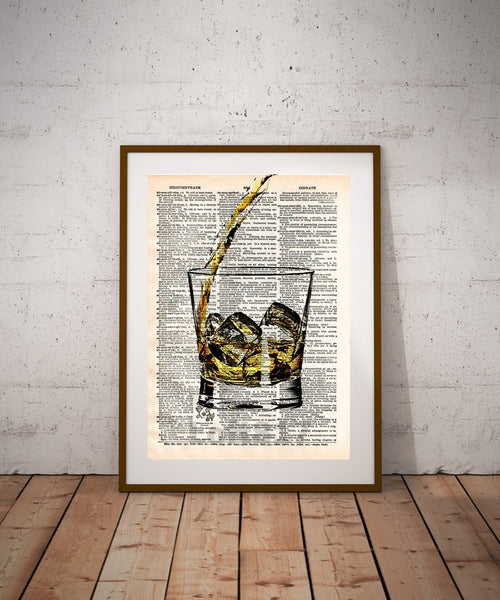Whiskey Art: Capturing the Significance of Distillation in Every Brushstroke
Whiskey Art: Capturing the Significance of Distillation in Every Brushstroke
Blog Article
The Value of Whiskey Art in Celebrating Heritage and Craftsmanship in the Beverage Sector
The elaborate relationship in between scotch art and the event of heritage and craftsmanship within the drink market can not be overemphasized. Through thoughtfully created tags and containers, bourbon brands envelop their historical roots and the artisanal abilities that specify their manufacturing techniques.
The Historical Roots of Whiskey
At the heart of bourbon's appeal exists an abundant tapestry of historic roots that map back to ancient human beings. The origins of whiskey can be connected to the purification methods of the Sumerians and Babylonians around 2000 BCE, where very early forms of fermented grain beverages began to emerge. Nonetheless, it was in the Middle Ages that the art of purification developed considerably, specifically in Ireland and Scotland, bring about the creation of bourbon as we know it today.
The term "whiskey" itself originates from the Gaelic word "uisce beatha," indicating "water of life." This expression emphasizes the social value of bourbon in Celtic cultures, where it was typically connected with routines, celebrations, and communal bonding. By the 15th century, purification came to be an acknowledged craft within reclusive areas, leading the way for the facility of legal distilleries.
As profession paths broadened, whiskey's appeal grew, transcending local borders and capturing the rate of interest of connoisseurs worldwide. Whiskey Art. This historical journey reflects not just the workmanship behind bourbon production yet also its important role in social and social contexts, noting it as a significant beverage throughout background
Artistic Expression in Branding
Scotch branding stands as an engaging junction of artistry and business, where aesthetic identity plays an important duty fit customer perception. The aesthetics of whiskey tags, product packaging, and advertising materials show not just the brand's story however also its core values and heritage. Via creative expression, distilleries convey a story that resonates with consumers, stimulating feelings and sparking connections.
Making use of shade, typography, and images in branding offers to set apart items in a saturated market. As an example, standard motifs may evoke a sense of authenticity and workmanship, while modern layouts can symbolize advancement and forward-thinking. This calculated artistic instructions boosts brand name recognition and loyalty, enabling consumers to build an individual partnership with the bourbon they select.
Furthermore, artistic expression in branding typically acts as a celebration of local heritage. Distilleries regularly integrate neighborhood signs or historical recommendations into their styles, creating a local color that invites consumers to take part in a wider cultural experience. Inevitably, the artistry behind scotch branding not only boosts visual appeal however additionally improves the overall story of the brand name, promoting a much deeper gratitude for the workmanship and heritage ingrained in each container.
Craftsmanship in Bottle Layout
The artistry apparent in bourbon branding prolongs past aesthetic identity to encompass the workmanship entailed in bottle design. Each bottle functions as a vessel not simply for the spirit within, however additionally for the tale it informs about its tradition, origin, and top quality. The style process calls for precise interest to information, as components such as closure, form, and product add significantly to the overall understanding of the bourbon.
Workmanship in bottle style includes choosing top quality glass that can improve the whiskey's shade and quality, while additionally supplying a tactile experience for the consumer. The try this web-site shape of the container should be both cosmetically attractive and practical, frequently reflecting the heritage of the brand name. Lots of distilleries choose distinct shapes or embossed logo designs that evoke a feeling of credibility and history.
In addition, the tag design and typography play an essential duty in interacting the brand name's narrative. Bourbon Art. A well-crafted container not only astounds the consumer's eye yet likewise reinforces the brand name's commitment to top quality and custom. This way, the workmanship of bottle layout ends up being a vital element of the whiskey experience, combining virtuosity with a profound regard for heritage
Cultural Value of Whiskey Art
Commemorating tradition and workmanship, the social importance of bourbon art transcends simple aesthetic appeals, linking with the historical and social stories of the regions from which it stems. Each bottle functions as a canvas, showing the distinct tales, mythology, and traditions that have shaped regional whiskey-making techniques. The intricate styles usually reflect the heritage of the distillers, integrating icons and motifs that resonate with the culture and worths of their communities.

Additionally, scotch art plays a vital function in public events and parties, serving as a substantial link between individuals and their shared experiences. By valuing the artistry in scotch product packaging, consumers grow a much deeper understanding and respect for the craft, eventually improving their enjoyment of the drink itself.
Modern Trends in Bourbon Presentation
In recent times, the presentation of scotch has actually developed to show modern tastes and trends while still recognizing typical craftsmanship - Limited Edition. Distilleries are significantly focusing on visual components that enhance the general alcohol consumption experience, linking the gap between heritage and modernity
Ingenious container layouts have actually emerged, frequently integrating sustainable products and imaginative labels that tell compelling stories. Lots of brand names currently team up with local artists, infusing their products with one-of-a-kind visual expressions that resonate with consumers. Additionally, limited-edition releases are typically packaged in collectible containers, including worth and charm for lovers.

Conclusion
In final thought, bourbon art works as a crucial conduit for revealing the heritage and workmanship integral in the beverage industry. With complex branding, cutting-edge container designs, and culturally significant creative aspects, bourbon brands efficiently honor their customs and get in touch with customers. This imaginative narrative not only elevates the gratitude of whiskey however likewise strengthens neighborhood identification and Resources pride among producers. Eventually, scotch art plays a crucial duty in preserving and commemorating the abundant social tapestry of whiskey-making.


Workmanship in bottle design involves picking high-grade glass that can improve the scotch's color and quality, while additionally supplying a tactile experience for the customer. In this means, the workmanship of container style becomes an essential facet of the scotch experience, merging virtuosity with a profound respect for heritage.
In verdict, scotch art offers as a crucial channel for sharing the heritage and workmanship fundamental in the drink industry.
Report this page